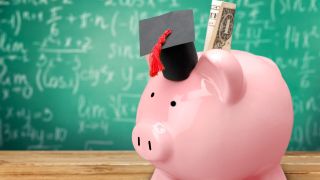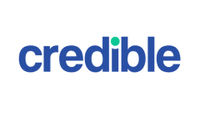While interest rates for those looking to go private and take on the best student loan (opens in new tab) have already been dropping, it has now been revealed that the cost of federal student loans will plunge to record lows. According to Savingforcollege.com (opens in new tab), interest rates for new federal student loans disbursed between July 1, 2020 and June 30, 2021 will fall by 1.779% percentage points, following a year-on-year decrease in the high yield of 10-year Treasury Notes on which the interest rates are based and recalculated each year. For undergraduates, this means an interest rate of 2.75% awaits on a Federal Direct Stafford loan this academic year, down from 4.53% during the past school year, and beating the previous record low of 2.875% set in 2005. At the same time, federal graduate loans will drop to a rate of 4.3%, down from 6.08%, and the cost of federal PLUS loans (for graduate and parent borrowers) will fall to 5.3%, down from 7.08%.
How much lower will student loan payments be?
The arrival of lower interest rates obviously means new borrowers will benefit from smaller monthly payments and decreased interest costs over the life of their loan compared with those who started college last year. As a result, it is calculated that monthly loan payments on new federal student loans will be about $8.37 lower per $10,000 borrowed - an 8.1% decrease - assuming a 10-year repayment term. This will save borrowers about $100 in interest per year and about $1,004 in total interest over the life of the loan, per $10,000 borrowed. Loan fees also need to be taken into account, but will remain at 1.059% for Federal Direct Stafford loans and 4.236% for Federal Direct PLUS loans through September 30, 2020.
Federal student loans vs. private student loans
With the best private fixed student loan currently coming at a rate of around 4.0%, new students will generally find that undergraduate federal student loan interest rates are lower. This suggests that borrowers should take advantage of the federal borrowing options available to them before taking a private loan. That said, all federal loan interest rates are fixed, whereas private student loans can come on both a fixed and a variable rate basis - and variable rates are currently as cheap as 1.5%. While attractive at first glance, the vital caveat with variable rates, of course, is that borrowers are exposed to the possibility of higher payments in the future. “Be careful about comparing variable interest rates on private student loans with fixed rates on federal student loans,” warns Mark Kantrowitz, a student loan expert and publisher of Savingforcollege.com. “Variable rates can increase, while fixed interest rates do not change.” It is also the case that federal student loan rates are the same to new students regardless of their circumstances, whereas private student loan interest rates will vary, based on the borrower’s credit and the term of the loan. With few undergraduates having the credit history or income to get a private student loan on their own, it also follows that more than 90% of private loans have a co-signer; federal loans, on the other hand, never require a co-signatory. “Interest rates on private student loans are credit underwritten, meaning that you must have an excellent credit score (opens in new tab) to qualify for the best advertised interest rates,” says Kantrowitz. “Most borrowers will get a higher interest rate.”
What should existing student loan holders do?
Importantly, the new record low interest rates only apply to new federal student loans, and do not affect existing loans. However, existing loan borrowers who are paying higher rates still have the option to refinance their federal loans into private student loans, where rates have been dropping too. Indeed, Savingforcollege.com reveals interest rates on private student loan refinance have decreased to as low as 2.99% on fixed-rate private refinance student loans and to as low as 1.99% on variable-rate private refinance student loans. However, for those thinking about refinancing from federal into private student loans, a vital consideration must be the loss of valuable benefits that are available on federal student loans. Currently, for example, under the CARES Act introduced in response to the Covid-19 outbreak, interest rates on federal student loans owned by the government have been temporarily reduced to 0% through September 30 to provide relief due to financial hardship because of the coronavirus. As Mark Kantrowitz is at pains to point out: “Borrowers who refinance federal student loans into private student loans lose the superior benefits of federal student loans, such as the current payment pause and interest waiver, death and disability discharges, longer deferments and forbearances, income-driven repayment and loan forgiveness options.”
What to do if student debt is weighing you down
Anyone with overriding concerns about their student debt, whether due to a federal student loan, a private student loan, credit card (opens in new tab) debt or borrowing through a personal loan (opens in new tab), should first contact their lender if they feel in need of help. Other potential options include the best debt consolidation services (opens in new tab), to try and make repayments more manageable, and then maybe the best debt settlement companies (opens in new tab), but speaking to your lender should always be the first port of call.

